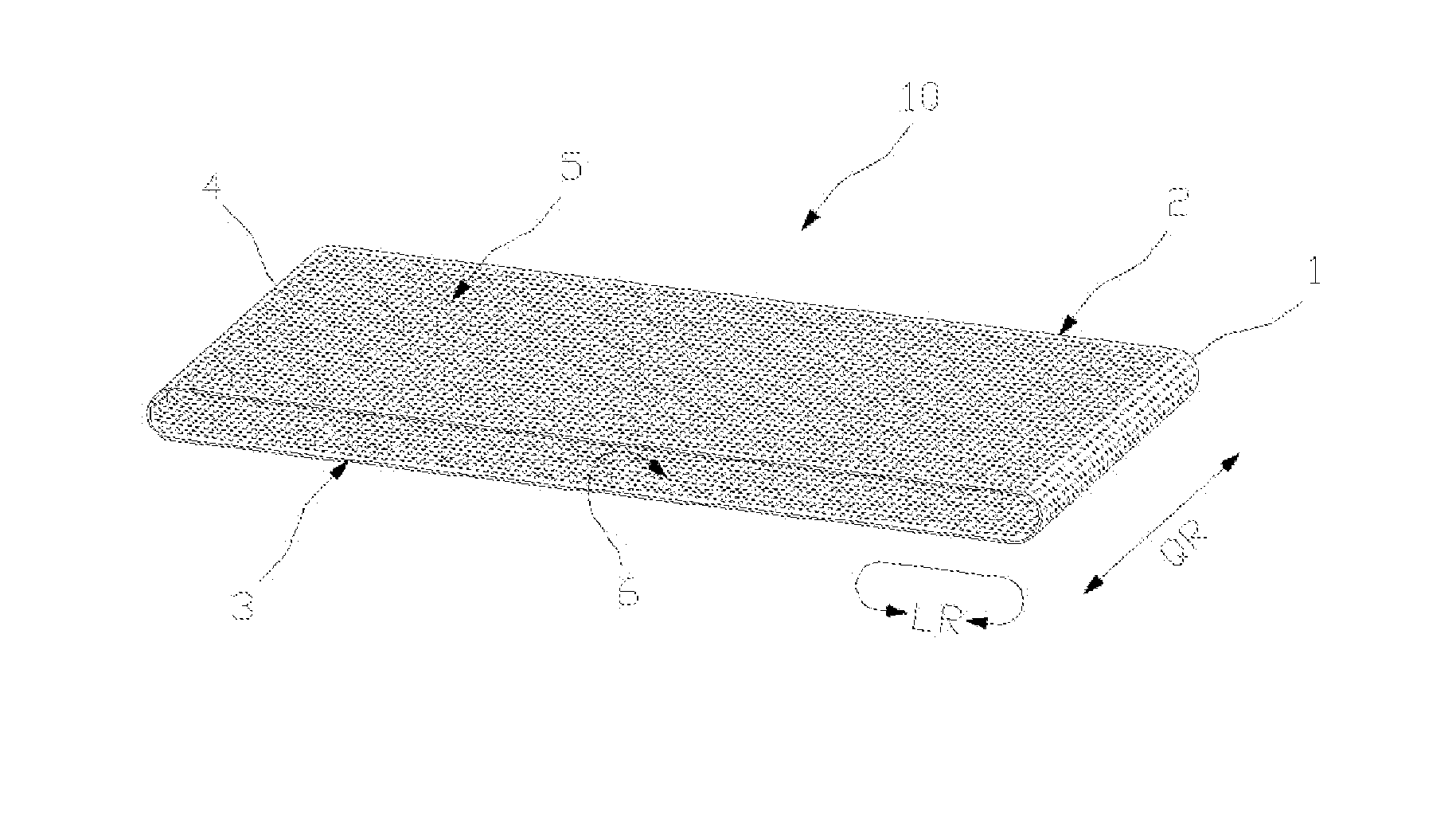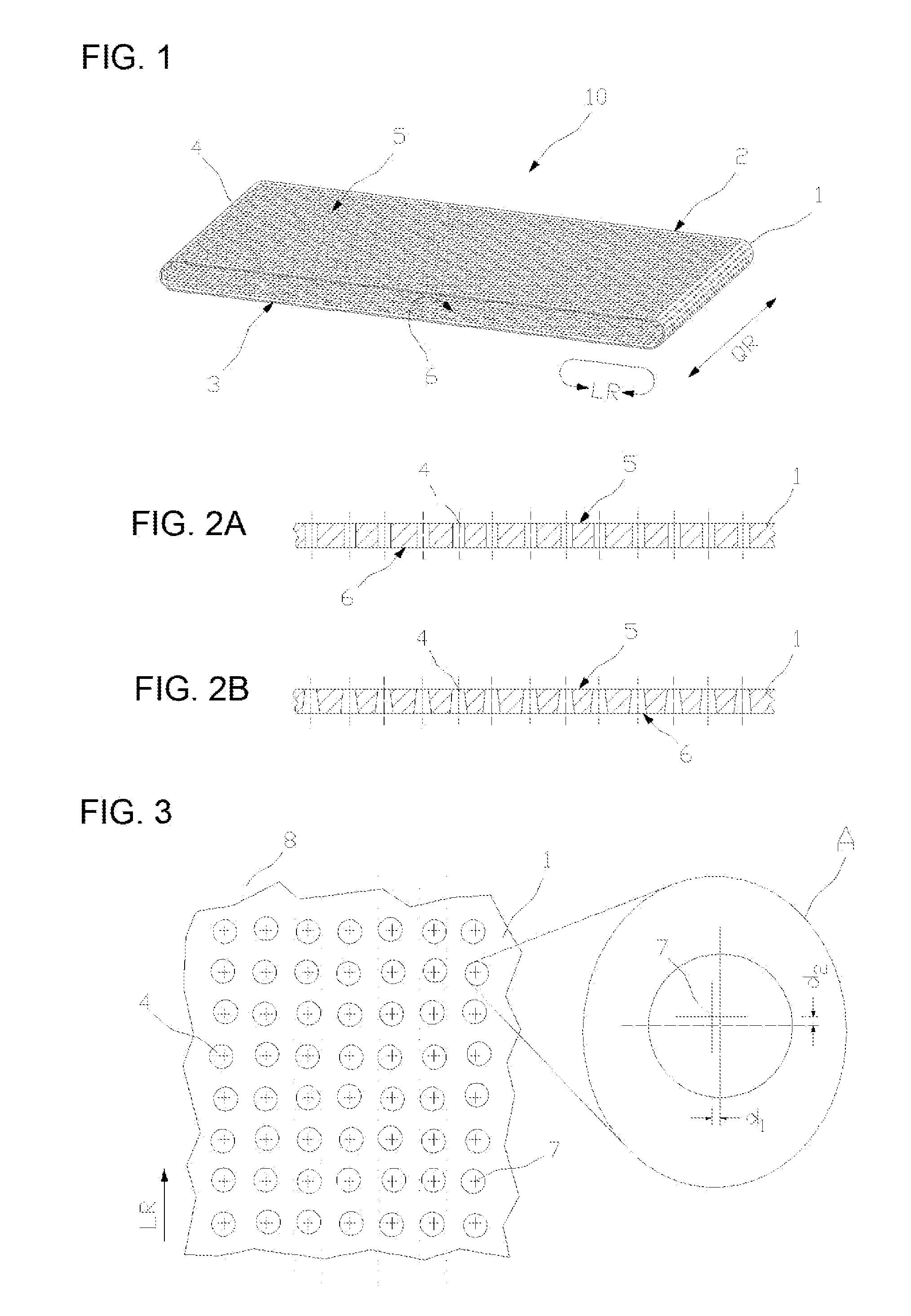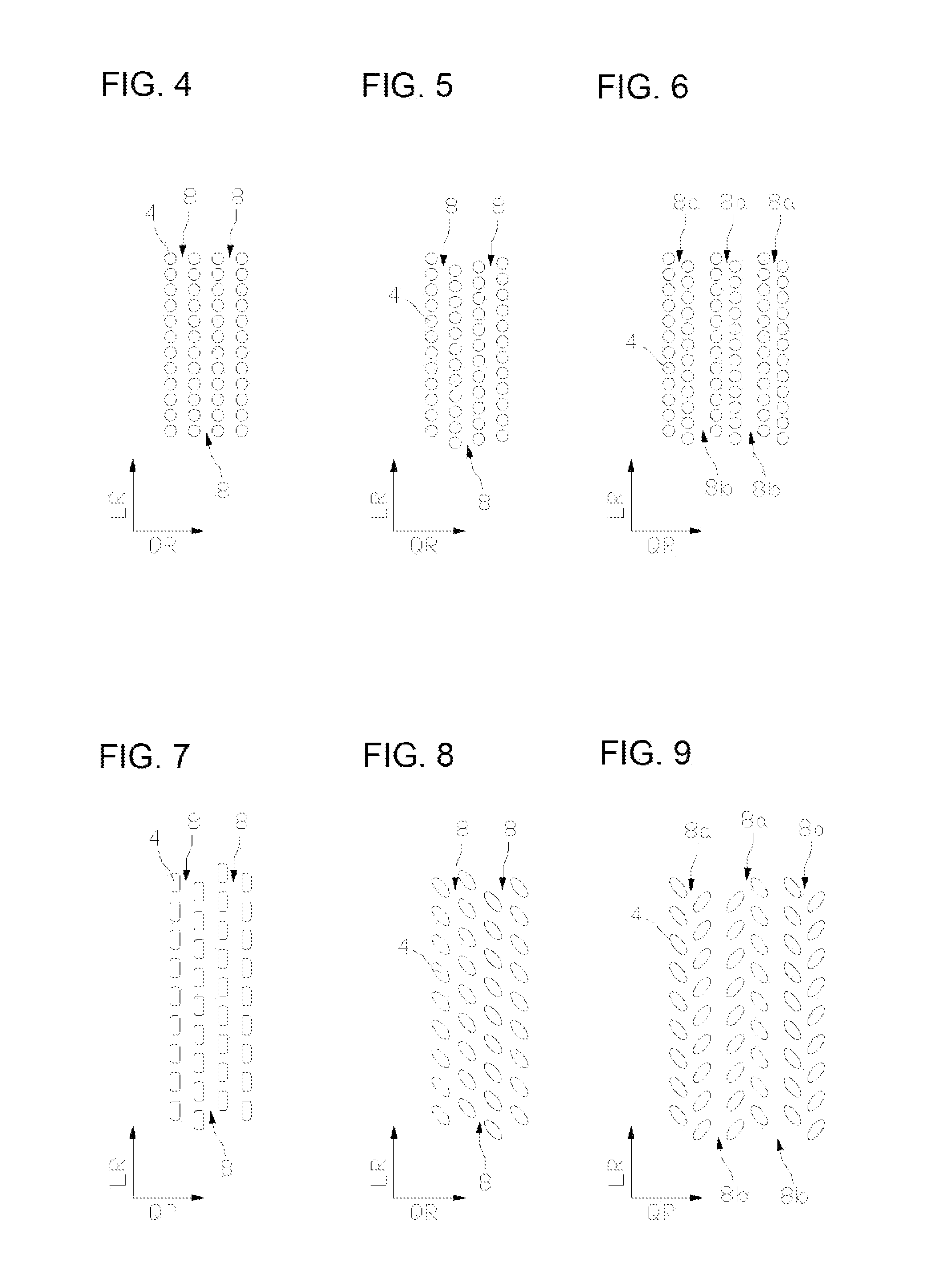Perforated film clothing
a film clothing and perforation technology, applied in the field of clothing, can solve the problems of low flexural strength of woven forming fabrics, poor paper quality, visible markings in paper, etc., and achieve the effect of reducing the occurrence of overlapping patterns
- Summary
- Abstract
- Description
- Claims
- Application Information
AI Technical Summary
Benefits of technology
Problems solved by technology
Method used
Image
Examples
Embodiment Construction
[0034]Referring now to the drawings, and more particularly to FIG. 1, there is shown a schematic depiction of perforated clothing 10. The clothing consists of belt 1 which is laterally defined by two side edges 2 and 3, each of which follows an endless line, and therefore has no end. Accordingly, belt 10 in itself is also endless and is produced as a so-called endless belt. Besides side edges 2 and 3, belt 1 is also defined by two surfaces 5 and 6 arranged opposite each other. Surface 6 of belt 1 facing into itself forms the inside of the clothing and as a rule is used to transfer forces for the rotation of the belt. Opposite surface 5 located opposite, and facing outward in FIG. 1 normally serves as a support for the fibrous stock suspension or respectively for the fibrous web. Direction QR provided by the width expansion of belt 1 is hereafter referred to as cross direction and is consistent with the cross machine direction when utilizing the clothing in a paper machine. Rotation ...
PUM
| Property | Measurement | Unit |
|---|---|---|
| width | aaaaa | aaaaa |
| width | aaaaa | aaaaa |
| width | aaaaa | aaaaa |
Abstract
Description
Claims
Application Information
 Login to View More
Login to View More - R&D
- Intellectual Property
- Life Sciences
- Materials
- Tech Scout
- Unparalleled Data Quality
- Higher Quality Content
- 60% Fewer Hallucinations
Browse by: Latest US Patents, China's latest patents, Technical Efficacy Thesaurus, Application Domain, Technology Topic, Popular Technical Reports.
© 2025 PatSnap. All rights reserved.Legal|Privacy policy|Modern Slavery Act Transparency Statement|Sitemap|About US| Contact US: help@patsnap.com



